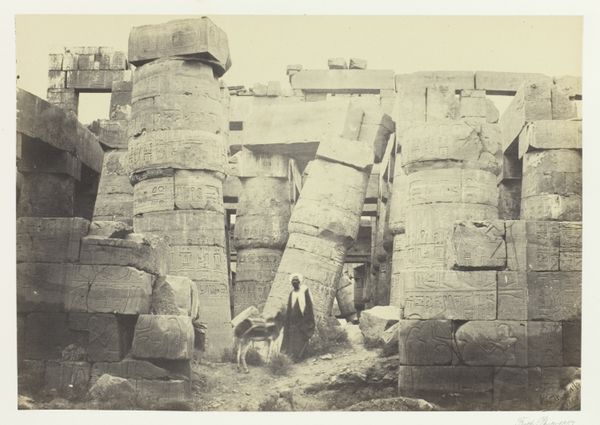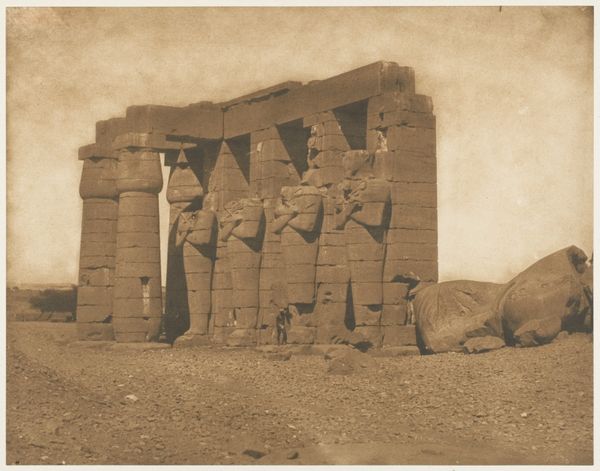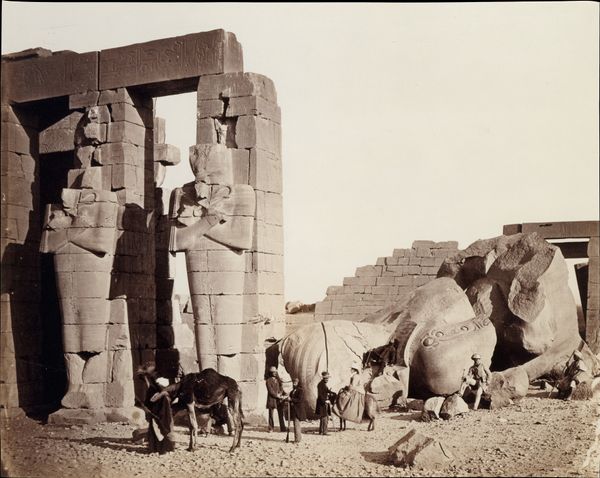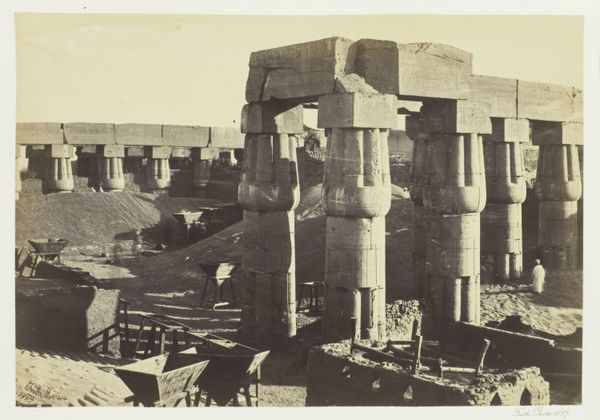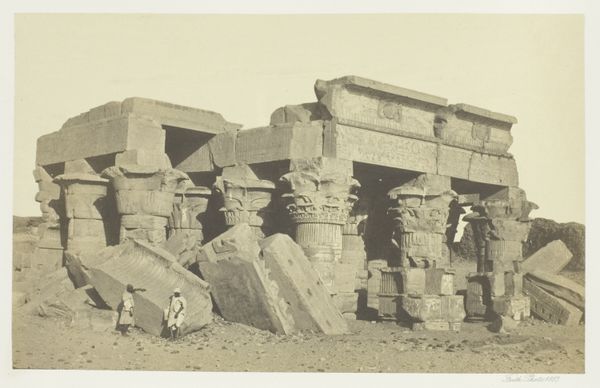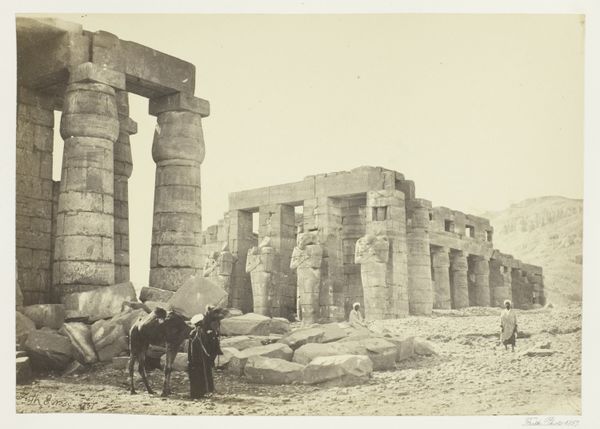
Osiride Pillars and Great Fallen Colossus, at the Memnonium, Thebes 1857
0:00
0:00
print, photography, architecture
#
16_19th-century
# print
#
landscape
#
ancient-egyptian-art
#
photography
#
egypt
#
ancient-mediterranean
#
men
#
architecture
Dimensions: 16.1 × 22.8 cm (image/paper); 29.1 × 42.6 cm (album page)
Copyright: Public Domain
This is a photograph of the Memnonium in Thebes, taken by Francis Frith in the mid-19th century, using a process called albumen print. Consider how the very act of photography was then perceived: as a way to capture and possess images from distant lands. Frith mass-produced these images for a Victorian audience eager to consume the exotic. The albumen process itself involves coating paper with egg white, making it sensitive to light, before contact printing it with a negative. This results in a warm, sepia-toned image with a soft, almost dreamlike quality. The image's texture, with its fine detail and tonal range, adds to the scene's grandeur and ruin. The act of photographing these ancient monuments also speaks to the power dynamics of the time. Western photographers, like Frith, traveled to Egypt and other parts of the world, documenting and, in a sense, appropriating these cultures through the lens of their cameras. So, as you look at this image, remember that photography isn't just about capturing a scene, but about the social and historical context in which it was created, blurring the lines between art, documentation, and cultural exchange.
Comments
No comments
Be the first to comment and join the conversation on the ultimate creative platform.

